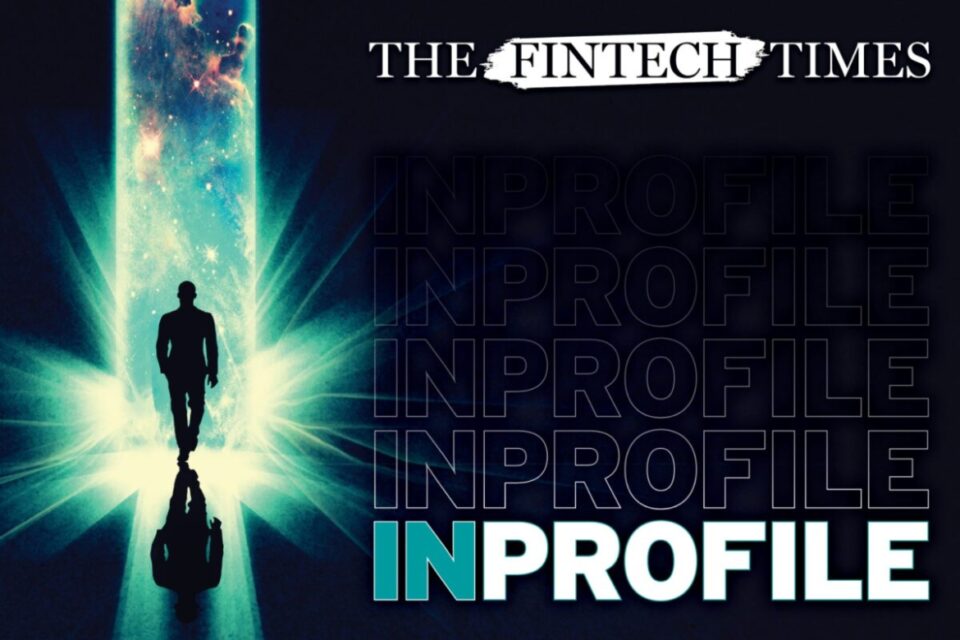In this weeks instalment of the In Profile series, we speak to Karl MacGregor CEO and co-founder, Vyne, to learn more about how the company is transforming the payments space.

Tell us more about your career to this point?
I have worked in the payments and e-commerce industry for over two decades forming digital strategies at Worldpay, Ladbrokes and Barclaycard to name a few. I’ve had a front-row seat to its wholesale transformation over the last 25 years.
In my current role as Co-Founder and CEO of Vyne, my focus is to transform payments by bringing a modern-day solution to the table to enable faster, safer and seamless payments for merchants and consumers.
What was the inspiration behind founding Vyne?
After years of working in the payments industry, I became frustrated with the way that the payments ecosystem was lagging behind industry needs, and could clearly see that a fresh approach that worked for both retailers and consumers was needed.
Current payment solutions are simply not user-friendly. The traditional bank transfer offers a cumbersome payment process that is not fast or agile enough for the modern world. Card payments are costly and can have a high failure rate, and direct debit payments are not real-time, which causes disruption to businesses and consumers. We believe the future of payments is digital and they need to be frictionless, contactless, and fair. I started Vyne to provide seamless account-to-account payment solutions that are faster, simpler, and much more cost-effective.
Vyne’s instant account-to-account payments eliminate middlemen while improving the consumer experience. Our innovative open banking powered solution enables merchants to boost conversions, reduce costs, and drive revenue. We have created a platform that is completely channel-agnostic and provides an end-to-end digital experience to businesses – whether it’s on a phone, browser, or in-store.
What problems are you solving?
While the digital world is constantly evolving, existing payments and banking solutions remain largely unchanged and stacked against merchants and consumers.
Firstly, traditional payments take several days to settle. We offer instant settlement as standard, improving cash flow. This enables consumers and merchants to access funds immediately, offer real-time refunds and payouts, and simplifies reconciliation.
Second, businesses that accept payments are held hostage by an ever-increasing processor and card scheme fees. Not only do we allow businesses to avoid these costs by bypassing the card networks entirely, but this removes the need for multiple gateways and eliminates interchange fees, helping businesses save on costs.
A third problem is conversion. Our seamless payment experiences help merchants secure conversions by offering a frictionless UX via different channels, including online and in-store checkout, payment links, and QR codes for static or dynamic payment content.
Finally, payment security is another pressing concern for merchants. Each and every payment made through Vyne is automatically Strong Customer Authentication (SCA) compliant, dramatically reducing the risk of fraud for customers and merchants while eliminating chargebacks, all without impacting conversion. We allow customers to make payments directly from their own verified bank app, with authentication carried out quickly and seamlessly, reducing friction and improving the customer experience.
We are solving these problems for multiple verticals including retail, digital goods, travel, automotive, cryptocurrency, and remittance.
How is open banking transforming retail and e-commerce?
Since the onset of the pandemic, the retail industry has undergone rapid digital transformation. There are two retail trends that have presented an opportunity to increase adoption of open banking payments. First, electronic payments have grown in popularity as use of cash has declined while consumers’ need for instant gratification has increased, they’re calling out for instant, fiction free payments. Second, e-commerce’s share of UK retail sales has increased, highlighting the need for smooth online customer journeys. Consumers and merchants are looking for innovative ways to pay that are agile, secure, and convenient. Open Banking powered account-to-account payments enable retailers to meet these rising consumer payment demands.
Customer retention is a key priority for merchants and as such they are looking to offer better and more diverse benefits to customers. With open banking, customers can view their entire financial situation- bank accounts, credit, insurance mortgages, pensions, etc- in one place, and move freely between the best value financial products and providers.
Cart abandonment is another issue for retailers that’s causing stress. Our latest research shows that regular online shoppers are abandoning baskets at least once a month, citing hidden charges and frustration at inputting lengthy card details as the chief reasons for doing so.
Returns are a major concern in the UK’s retail industry. As per our research, 43 per cent of consumers have had to chase their refunds for online purchases, leaving them feeling frustrated and angry at retailers. Poor payment terms can damage customer loyalty, but open banking facilitates instant returns leading to higher customer satisfaction.
In this new, pandemic-influenced world of e-commerce, merchants and consumers want speedy, secure, and convenient customised payment experiences. Open banking solutions can deliver on this demand.
What are the benefits of open banking?
Open banking enables the delivery of innovative consumer financial products via API and provides financial institutions with improved decision-making ability by granting access to data and insights.
Open banking payments are a more modern, transparent, and seamless approach to transacting that benefit both end consumers and merchants. It allows users to move money between bank accounts instantly; reduces costs by bypassing the card networks and their transaction fees; and increases cart conversions by offering simple mobile-first experiences. Furthermore, it is also fraud resilient – with open banking there are no chargebacks, need for fraud screening, nor risk of data hacks. Open banking is instant with increased cash flow with no delays in receiving funds direct to merchants’ bank accounts.
The number of consumers using open banking is increasing rapidly, but there’s still time for businesses to get ahead of the curve.
Is open banking, and the cardless economy, set to be the next big thing in 2022?
The Open Banking Implementation Entity (OBIE) revealed that 3.9 million British consumers and 600,000 UK small businesses are currently using open banking services, with one million new users being added every six months. 2022 will see a continued rise in consumers demanding easier ways to pay for goods and services and this is where open banking will shine. In 2021, we saw a 60 per cent increase in new open banking customers (up from 2.8 million in December 2020). This clearly demonstrates how the payments landscape is changing, as more and more consumers are experimenting with trying new payment methods.
Why is it important for businesses to shore up their payment processes for consumers?
Consumers are demanding change. The post-pandemic consumer is looking for instant and secure payments with little to no friction. Account-to-account payments eliminate the need to fill out long card numbers and allow payments in as little as three clicks, reducing customer frustration with the process. It is important for merchants to jump on this growing trend in order to keep consumers happy and in turn, build loyalty and grow their revenues.
How much does regulation come into play?
Open banking was initiated by regulation, PSD2, which was the catalyst for financial institutions across Europe to adopt open APIs. The removal of the 90-day reauthorisation requirement in November 2021 was a landmark change that will support the adoption of open banking services. Now, consumers and businesses will be able to stay connected to their selected third-party providers for longer, resulting in an improved user experience. This is a positive step forward towards the future of payments and the rise of open banking.
What is the future of open banking, and where does Vyne fit into that?
Open banking is transforming the way we pay for goods and services and manage our finances. As the payments landscape undergoes a period of significant change, Vyne is setting the course for the future of payments by offering a more modern, transparent and seamless approach that benefits both merchants and consumers in a transaction. Our mission is to become the preferred way to pay and get paid and we will strive towards this by continuing to promote instant account-to-account bank payments that eliminate middle-men and improve the consumer experience. We are providing an intelligent infrastructure that puts fintech at people’s fingertips.
By 2025, around 40 million people will be able to access open banking services, and we are confident that we will make a significant contribution to this figure.



